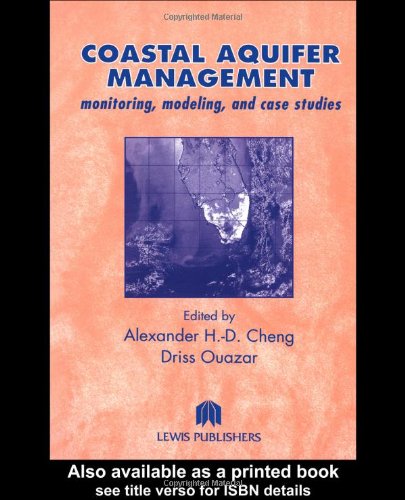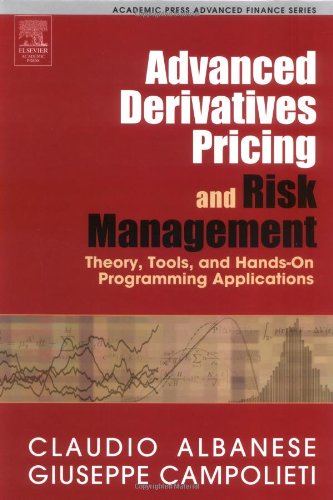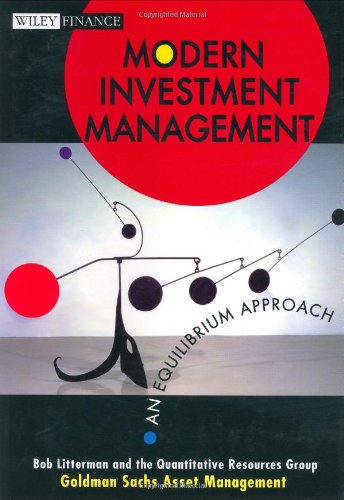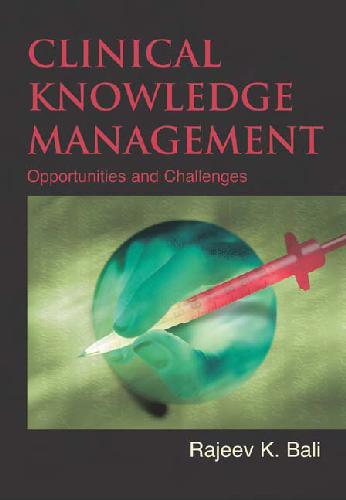Alexander H.D. Cheng, Driss Ouazar156670605X, 9781566706056
Table of contents :
Half-Title……Page 2
Title……Page 3
Copyright……Page 4
Preface……Page 6
Contributing Authors……Page 8
Contents……Page 11
1. INTRODUCTION……Page 13
2. EXISTING DATA COLLECTION AND ANALYSIS……Page 15
3. INTEGRATED DATABASE……Page 16
4. IDENTIFY PROBLEM AND DEVELOP A CONCEPTUAL MODEL……Page 17
5. NUMERICAL MODELING……Page 20
6.1 Well Drilling, Water Level Readings, and Chloride Sampling……Page 24
6.3 Surface Geophysical Studies……Page 25
7. REFINE AND PRIORITIZE PROBLEMS AND SET OBJECTIVES……Page 26
8. IDENTIFY SOLUTIONS……Page 27
9. EVALUATE MANAGEMENT ALTERNATIVES……Page 28
REFERENCES……Page 31
1.1 Project Area……Page 33
1.2 Hydrogeology……Page 34
1.3 Groundwater Overdraft and Saltwater Intrusion……Page 35
2. SALTWATER BARRIER PROJECTS……Page 37
2.1 West Coast Basin Barrier Project……Page 38
2.3 Dominguez Gap Barrier Project……Page 39
3. BARRIER WELL MANAGEMENT……Page 41
4. BARRIER WELLS ALTERNATIVES……Page 42
4.1 Decision Analysis……Page 43
4.2 Decision Analysis Results……Page 44
REFERENCES……Page 46
1. INTRODUCTION……Page 48
2.1 Program Description……Page 49
2.2 Reactive Transport Modeling with PHREEQC and SEAWAT……Page 50
2.3.1 Code Description……Page 51
2.3.2 Application to the Southern Everglades of Florida……Page 52
3.2.2 Model of the Groundwater System of Rijnland Water Board……Page 54
3.2.4 Discussion of Results……Page 57
4.1.1 Description……Page 58
4.1.3 Computational Aspects……Page 59
4.2.3 Conceptual Model and Calibration……Page 61
4.2.4 Model Calibration Results……Page 62
5.1 Theory……Page 63
5.2 Example Application……Page 64
REFERENCES……Page 66
1. INTRODUCTION……Page 69
2.1 Groundwater Flow Equation……Page 70
2.2 The Advection-Dispersion Equation……Page 72
3.1 Geometry, Model Grid, and Temporal Discretization……Page 73
3.3 Determination of the Initial Density Distribution……Page 74
4.1 Calibration of the Model……Page 76
4.2 Autonomous Saltwater Intrusion during the Period 2000–2200 AD……Page 77
4.3 Effect of Sea Level Rise on Saltwater Intrusion during the Next 500 Years……Page 78
5. CONCLUSIONS……Page 79
REFERENCES……Page 80
1. INTRODUCTION……Page 84
1.1.1 Carbonate Platforms……Page 85
1.1.4 Large Potentiometric Gradients……Page 86
1.2 Submarine Groundwater Discharge……Page 87
1.3 Tools for Submarine Groundwater Discharge……Page 89
2. CASE STUDY: TAMPA BAY……Page 90
3. CASE STUDY: CRESCENT BEACH SUBMARINE SPRING……Page 93
4. CONCLUSIONS……Page 95
REFERENCES……Page 96
1. INTRODUCTION……Page 99
2. TIDE-INDUCED GROUNDWATER OSCILLATIONS IN COASTAL AQUIFERS……Page 101
2.1 Nonlinear Effects……Page 102
2.2 Slope Effects……Page 103
2.3 Capillary Effects……Page 104
2.4 Leakage Effects……Page 105
2.5 Low Frequency Oscillations……Page 106
2.6 Vertical Flow Effects (Intermediate Depth)……Page 107
2.8 Seepage Face Effects……Page 108
3. IMPLICATIONS FOR CONTAMINANT TRANSPORT AND TRANSFORMATION IN TIDALLY INFLUENCED COASTAL AQUIFERS……Page 109
3.1 Tide-Induced Flushing and Dilution Effects on Chemical Transport Processes……Page 110
3.2 Tide-Induced Mixing of Fresh Groundwater and Seawater……Page 112
4. CONCLUSIONS……Page 115
REFERENCES……Page 117
1. INTRODUCTION……Page 120
2.2 The Moving Boundary……Page 121
2.3 Beach Slope Effect……Page 123
3.1.2 Water Level Measurements……Page 124
3.1.2.2 Long-term water level measurements……Page 125
3.3.1 Thermal Infrared Aerial Imagery……Page 126
3.3.2 Beach Salinity Transects……Page 127
3.3.3.1 Short-term sampling……Page 128
4.1 Study Location……Page 129
4.2.1 Infiltration and Seepage Mechanism……Page 131
4.2.2 Temporal and Spatial Pattern of Seepage……Page 132
4.2.4 Shoreline Seepage Variability……Page 133
5. SUMMARY……Page 135
REFERENCES……Page 137
1. INTRODUCTION……Page 139
2.3 Multivariate Interpretation From Standard Logs……Page 140
2.4 Inversion Model Characteristics in Data Inversion……Page 142
3. THE SOUTH FLORIDA STUDY……Page 143
3.2 Water Quality Regression……Page 144
3.5 Verification Boreholes……Page 146
4. CONCLUSIONS……Page 149
REFERENCES……Page 150
1. INTRODUCTION……Page 151
2.1 Field Investigations and Monitoring Network……Page 152
2.2 Hydrogeological and Hydrogeochemical Investigation Results……Page 155
3.1 Description of the Modeling Procedure……Page 158
3.2 The Hydrogeological Model……Page 159
3.3 The Conceptual Model……Page 160
3.4 Mathematical Model and Its Numerical Solution……Page 162
4.2 Geographic Database……Page 163
5. CONCLUSIONS……Page 164
REFERENCES……Page 170
1. INTRODUCTION……Page 171
2. PROCESSES MODELED, PARAMETERS, AND CALIBRATION……Page 172
3.1 Uncertainty Analysis of Flow Parameters……Page 174
3.2 Uncertainty Analysis of Transport Parameters……Page 177
3.3 Results of the Parametric Uncertainty Analysis……Page 179
3.4 Flow and Transport Results of the Second Modeling Stage……Page 181
4.1 Geothermal Heat……Page 182
4.2 Island Half-Width……Page 185
4.3 Dimensionality of Rubble Chimney……Page 186
5. CONCLUDING REMARKS……Page 187
REFFERENCES……Page 188
1. INTRODUCTION……Page 190
2. DETERMINISTIC SIMULATION MODEL……Page 191
3. OPTIMIZATION UNDER DETERMINISTIC CONDITIONS……Page 193
4. GENETIC ALGORITHM……Page 194
5. EXAMPLE OF DETERMINISTIC OPTIMIZATION……Page 195
7. CHANCE CONSTRAINED OPTIMIZATION……Page 197
8. CASE STUDY—MIAMI BEACH, SPAIN……Page 198
9. CONCLUSION……Page 205
REFERENCES……Page 206
2. PREVIOUS STUDIES……Page 209
3.1 Hydrogeologic Setting……Page 211
3.2 Hydrogeologic Boundaries……Page 212
3.3 Geometry of Freshwater Lens……Page 215
4. NUMERICAL MODELING……Page 216
4.1 Model Framework……Page 217
4.2 Model Calibration and Sensitivity……Page 218
5. CONCLUSIONS……Page 219
Acknowledgments……Page 220
REFERENCES……Page 221
Index……Page 225







Reviews
There are no reviews yet.